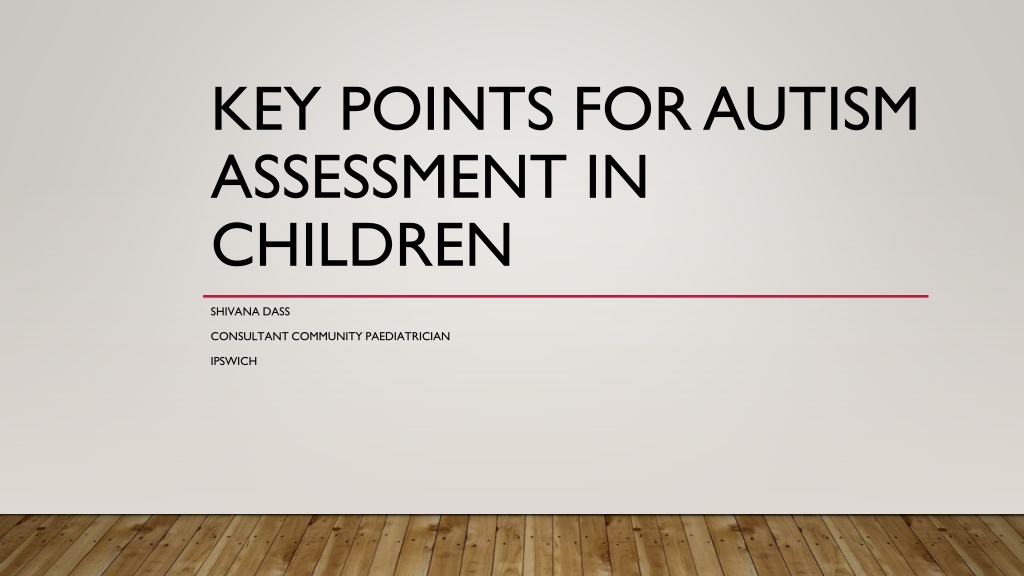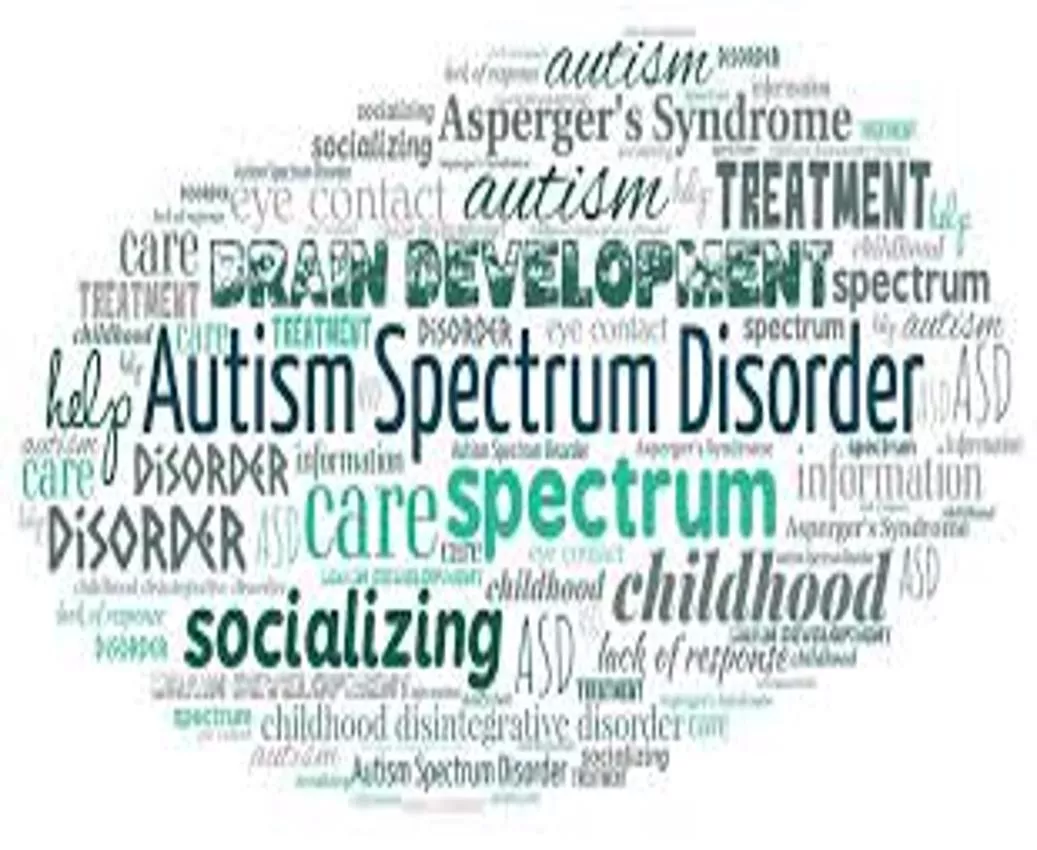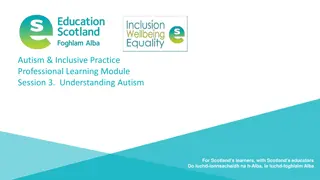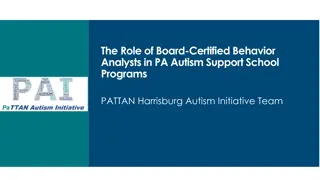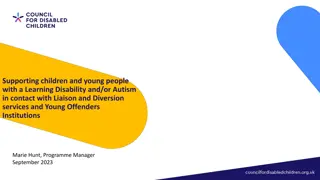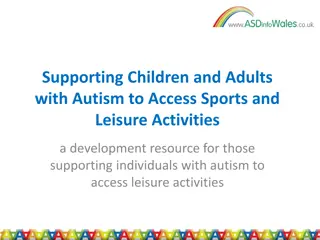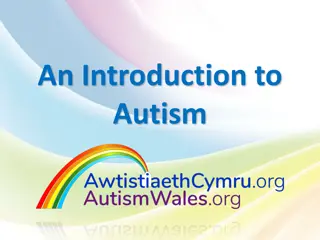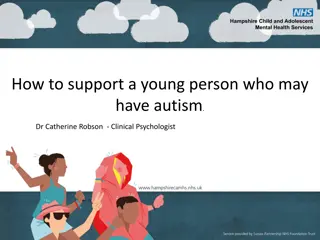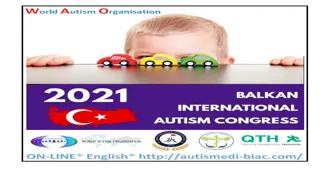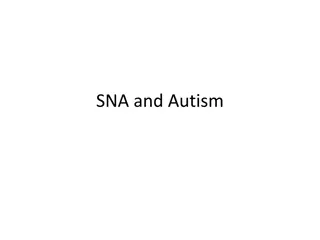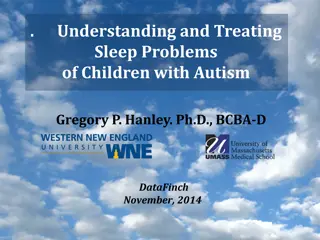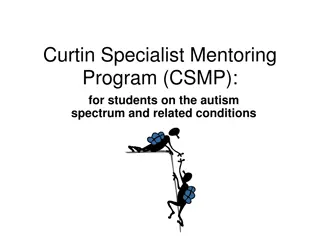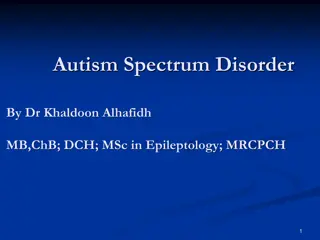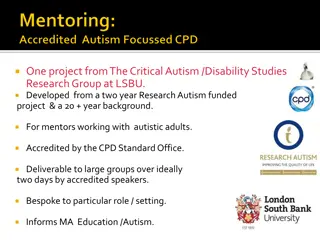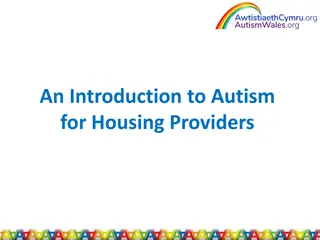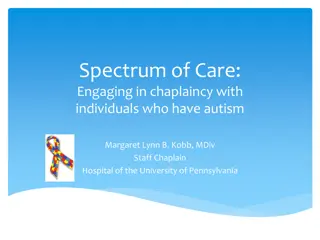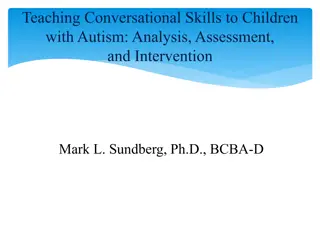Key Points for Autism Assessment in Children
DSM-V criteria emphasize social communication, behavior patterns, and specify diagnostic specifiers. The assessment focuses on needs, severity, and required support. Social (pragmatic) communication disorder involves deficits in social use of communication, impacting social relationships. ASD in preschoolers presents with nonverbal speech, repetitive behaviors, and sensory interests.
Download Presentation

Please find below an Image/Link to download the presentation.
The content on the website is provided AS IS for your information and personal use only. It may not be sold, licensed, or shared on other websites without obtaining consent from the author. Download presentation by click this link. If you encounter any issues during the download, it is possible that the publisher has removed the file from their server.
E N D
Presentation Transcript
KEY POINTS FOR AUTISM ASSESSMENT IN CHILDREN SHIVANA DASS CONSULTANT COMMUNITY PAEDIATRICIAN IPSWICH
DSM-V AUTISTIC SPECTRUM DISORDER Now two domains Social communication and social interaction. Restricted, repetitive patterns of behaviour, interests or activities including sensory difficulties, Studies have shown that this change increases sensitivity and specificity of diagnosis Symptoms must be apparent from early childhood, even if not recognised until later i.e. social demand exceeds their capacity . Focus is more on the person s needs and there is an expectation of assessment of the severity of autism and how much support is needed. Diagnosis can be accompanied by specifiers e.g. autism spectrum disorder with intellectual disability or autism spectrum disorder with language impairment Women are specifically mentioned recognises that they may be underdiagnose
DSM-V SOCIAL (PRAGMATIC) COMMUNICATION DISORDER A. Persistent difficulties in the social use of verbal and non-verbal communication as manifested by all of the following: 1. Deficits in using communication for social purposes, such as greeting and sharing information, in a manner that is appropriate to the social context 2. Impairment of the ability to change communication to match social context or the needs of the listener, such as speaking differently in a classroom than on the playground, talking differently to a child than to an adult, and avoiding use of overly formal language 3. Difficulties following the rules for conversation and storytelling, such as taking turns in conversation, rephrasing when misunderstood, and knowing how to use verbal and nonverbal signals to regulate social interaction 4. Difficulties understanding what is not explicitly stated (eg making inferences) and nonliteral or ambiguous meanings of language (e.g. idioms, humour, metaphors, multiple meanings that depend on context for interpretation) Social (pragmatic) communication disorder cont B. The deficits result in functional limitations in effective communication, social participation, social relationships, academic achievement, or occupational performance, individually or in combination C. The onset of symptoms is in the early developmental period but may not be fully manifest until social communication demands exceed limited capacities D. These symptoms are not attributable to another medical or neurological condition or to low abilities in the domains of word structure and grammar, and are not better explained by autism spectrum disorder, intellectual disability, global developmental delay or another mental disorder
ASD-WHAT IT LOOKS LIKE PRE SCHOOL Non verbal or non functional speech Repetitive noises On own agenda No name response No sharing joint attention/joint referencing No shared enjoyment Eye contact Sensory interests Repetitive interests Stereotyped behaviours Poor sense of personal space
ASD WHAT IT CAN LOOK LIKE SCHOOL AGED Hard to engage, relationships not important Difficulties in sustaining conversations Don t feel need for other people Seen as cold, lacking empathy, can t understand emotions Difficulty taking other s views Rely strongly on cognitive information, not feelings Rigidity in thinking Often heightened or reduced sensitivities
DIAGNOSTIC PROCESS Pre School vs School Aged children Pre School Usually HV referral, rarely GP, sometimes SLT Nursery report is essential MDA process SpHV, SLT, OT, Paediatrician, Psychology, PT only if a physical concern - developmental levels are useful limitations Nursery encouraged to attend feedback Action plan EHCP
School Aged pathway Age 4-11; beyond this age is ADYSS GP/School nurse/SLT referral- through Barnardo s, not directly to us Schools not able to refer directly but school information is essential Useful info include: General concerns within school Learning levels What has been put in place to support the child More specific for social communication- social interaction with peers, adults, younger or older children, conversation skills, play skills, social background, family history, sensory processing difficulties Home educated children
Referral accepted Referral Planning Meeting Pathway for children over 4 years Specific Social Communication Difficulties Questionnaires- Parent and School Scores Free text Information is analysed by senior community paediatrician Plan Multi-Agency assessment For Speech Therapy assessment and paediatrician appt Just for paediatrician appt Other May be discharged at this point On occasion passed directly to psychology
ASSQ integrated school questionnaire (002).doc (sharepoint.com)
Speech therapy assessment by highly specialist speech therapist Usually at school Discussion with parent/teacher Observations at breaktime and in lesson Formal assessment of social use of communication Waiting times generally a few months Community Paediatrician appt Waiting list currently 1 year Usually have the speech therapy assessment prior to paediatric appt Initial appt usually a pulling together of school info, family info, speech therapy assessment, observations of child and assessment
Community Paediatrician appt (cont) Sometimes diagnosis is clear and can be made if supporting info available Other times, need another appt to clarify ADOS-2/ BOSA assessment- waiting list varies ADOS-2 Gold standard but not diagnostic in itself and must be considered in light of the available info Must be targeted to the child s learning levels Many things can contribute to the scoring on an ADOS, including learning difficulties, speech delay, attachment issues, anxiety, behavioural difficulties School Observation EADS
Because: Learning difficulties Speech delay Other underlying issues-differential diagnosis genetics eg Fragile X, Rett s FASD attachment, anxiety ADHD commonly clouds the presentation Safeguarding/ exposure to frightening situations/ abuse/neglect/understimulation Behavioural difficulties- ODD Epilepsy OCD Tics/Tourettes Self-Stimulation Parental mental health/ FII Hidden agenda-Benefits The diagnosis is rarely clear cut and frequently the above conditions co-exist or are the sole explanation for the child s presentation
PREVALENCE OF PSYCHIATRIC DISORDERS IN CHILDREN WITH AUTISM (SIMONOFF ET AL 2008) Population derived sample n=112, 10-14y, 98 male 70% had at least one comorbid disorder 41% had 2 or more Most common were Social anxiety disorder 29.2% ADHD 28.1% Of those 84% received a 2ndcomorbid diagnosis ODD 28.1%
(CONT.) Other disorders Tourette s 4.8%, Chronic tic disorder 9.0% Generalized anxiety disorder 13.4% Panic disorder 10.1% Enuresis 11%, Encopresis 6.6% OCD 8.2% Mood disorders (quite low, ?age range) Major depressive disorder 0.9% Dysthymic disorder 0.5% 10.9% had a period of depression or irritability not meeting criteria
ASD and girls. Compared to males, females with ASD have: fewer and qualitatively different repetitive behaviours equivalent levels of social and communication difficulties less obvious difficulties with socialising and behaviour regulation at school- but NOT at home! higher levels of internalising difficulties More subtle social difficulties...the ability to mask difficulties better than boys More socially motivated, and more often aware of what is lacking More skilled in one-to-one interaction than boys...often protected by a single friendship More likely to be misunderstood at initial presentation to service
What to look for in a girl with suspected ASD with normal-range IQ: Does she lack ability to interact fully in groups, and show reliance on one friendship? Emotional crisis often provoked by a breaking down of these friendships, especially in adolescence (when clinical manifestations are more prominent) Are RRSB s masked because they are normative and social in nature Children with high functioning ASD
RED FLAGS Developmental regression Seizures Prevalence epilepsy in ASD ~30% Prevalence ASD in epilepsy ~30% Epileptiform activity (subclinical epilepsy) seen in some children with ASD without seizures (up to 30% Sometimes it is difficult to differentiate between epileptic seizures and ASD mannerisms
We depend on Schools and value working together Formal Learning levels (education psychology where necessary) EHCP SENDIASS
Support Family Environment School Community From NHS Post diagnostic workshop run by Clinical Psychologists Early Bird- (under 5 s) Early Bird Plus- (5-8) run by the Suffolk Council Sensory Online training (OT) Specific OT input- can be accessed following a period of intervention through school and parents (website available) Psychology available but capacity issues Children with Learning Disability Team also capacity issues Activities Unlimited Benefits SENDIASS National Autistic Society
What happens when parents do not accept a diagnosis What happens when parents do not accept there is no diagnosis
Autism Diagnosis Criteria: DSM-5 | Autism Speaks Autism vs Social (Pragmatic) Communication Disorder Recommendations | Autism spectrum disorder in under 19s: recognition, referral and diagnosis | Guidance | NICE National Autistic Society (autism.org.uk) Autism West Midlands | Supporting the Autistic Community
